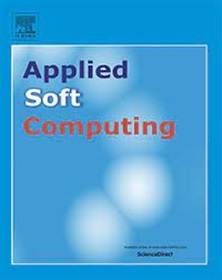基于多解释聚合比较的可解释性对抗样例检测
IF 6.6
1区 计算机科学
Q1 COMPUTER SCIENCE, ARTIFICIAL INTELLIGENCE
引用次数: 0
摘要
深度神经网络对抗性攻击已经扩展到可解释性领域,导致解释操纵。因此,我们提出了一种基于多解释聚合比较来检测解释性对抗性示例的新方法,称为AGGEC (Aggregate Explain Compare)。我们的方法通过对多个不同的判读结果进行聚合,综合分析判读聚合前后纹理形状的差异,并采用灰度共生矩阵提取判读聚合前后的纹理特征,以突出可识别的区别。这些差异随后被用来训练外部检测器。AGGEC在黑盒、灰盒和白盒场景下均表现出优异的检测性能,在CIFAR-10和ImageNet上的检测成功率分别达到99.4%和95.6%。实证结果证实了我们提出的方法在有效识别对口译结果的恶意操纵方面的有效性。本文章由计算机程序翻译,如有差异,请以英文原文为准。
Interpretability adversarial example detection through multi-interpretation aggregation comparison
Deep neural network adversarial attacks have extended to the domain of interpretability, resulting in interpretation manipulation. Therefore, we propose a novel approach for detecting explanatory adversarial examples based on multi-interpretation aggregation comparison, called AGGEC (Aggregate Explain Compare). Our approach employs the aggregation of multiple different interpretation results to enable a comprehensive analysis of the disparities in texture shapes before and after the interpretation aggregation and employs gray level co-occurrence matrix to extract texture features before and after the interpretation aggregation to accentuate the discernible distinctions. These dissimilarities are subsequently utilized to train an external detector. AGGEC exhibits exceptional detection performance in black-box, gray-box, and white-box scenarios, achieving detection success rates of 99.4% and 95.6% on CIFAR-10 and ImageNet, respectively. Empirical results substantiate the efficacy of our proposed method in effectively identifying malicious manipulation of interpretation results.
求助全文
通过发布文献求助,成功后即可免费获取论文全文。
去求助
来源期刊

Applied Soft Computing
工程技术-计算机:跨学科应用
CiteScore
15.80
自引率
6.90%
发文量
874
审稿时长
10.9 months
期刊介绍:
Applied Soft Computing is an international journal promoting an integrated view of soft computing to solve real life problems.The focus is to publish the highest quality research in application and convergence of the areas of Fuzzy Logic, Neural Networks, Evolutionary Computing, Rough Sets and other similar techniques to address real world complexities.
Applied Soft Computing is a rolling publication: articles are published as soon as the editor-in-chief has accepted them. Therefore, the web site will continuously be updated with new articles and the publication time will be short.
 求助内容:
求助内容: 应助结果提醒方式:
应助结果提醒方式:


